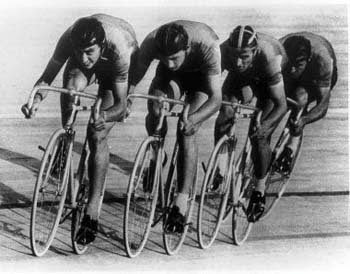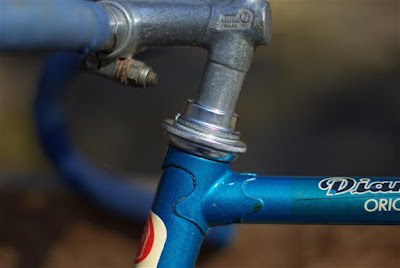Andries Gaastra, former Sales Manager at Batavus, founded Koga B.V. in 1974 when
his father Gerrit sold the Batavus business. He joined the first two
letters of his wife’s surname with the first two of his own to form the
brand name Koga.
Gaastra built the very first Koga at his own home in Oranjewoud, near
Heerenveen. Once Koga had become an importer of Shimano components, a network
developed including other Japanese cycle manufacturers. Among them was
Miyata, founded by Eisuke Miyata, a gunsmith employed by the Hitachi
Kuni Kasama Clan. Miyata built Japan's first conventional, modern
bicycle at the Miyata Gun Factory in 1890.
That met Gaastra´s aim to bring an exclusive range of lightweight bicycles at reasonable costs and prices to the market and took immediate advantage of more leisure time people could afford because of working weeks had become shorter.
In 1992 Andries Gaastra left Koga Miyata when Koga was sold to Atag Holdings.
Until 2010 Koga frames were produced by Miyata, and
therefore the brand name got Koga Miyata with the first lightweight modell Road Racer fully equipped with Shimano 500 launched in 1976; in 1980 touring bikes and Randonneur Bikes completed the portfolio.
Very early Andries Gaastra supported sports an stepped into sponsoring the “IJsboerke” racing team in 1977, the Capri Sonne team and Peter Winnen won the Tour de France stage over L´Alpe d´ Huez in 1981.
The winning bicycle used by Peter Winnen was delivered to L’Alpe d’Huez by
Team Capri Sonne only on the morning of the stage. This special, even
lighter version of the team bike had in fact only been finalised the day
before, and was transported overnight to the Alpe d’Huez stage start
personally by Koga assembler Aart Boer. Some of the riders decided on
the spot to use this new team bike, and among them was Peter Winnen.
In 2008 Marianne Vos wins Olympic Gold in the points race at the Olympic Games
in Beijing. Specially for the Olympic Games Koga developed the
unique Kimera track frame for Bos, Vos and the other riders of the
Netherlands core squad.
In 2004 Koga returns to the Tour de France with the Skil-Shimano Team and in 2012 Teun Mulder wins a bronze medal in the Keirin race at the Olympic Games in London.
The Pro-Racer was besides the Pro-Luxe the top of the Line Product with a frame made of Tange Champion tubes and equipped with the new and extraordinary reliable and light Shimano Dura Ace EX components.
I´ve came along a 1978 modell some time ago and managed to re-build it to factory standards
Bottom Braket: Shimano Dura Ace
Headset: Shimano Dura Ace
Crankset: Shimano Dura Ace
Front Derailleur: Shimano Dura Ace
Rear Derailleur: Shimano Dura Ace
Shift levers: Shimano Dura Ace
Brake Lever: Shimano Dura Ace
Brakes: Shimano Dura Ace
Wheelset: Shimano Dura Ace with MAVIC rims
Saddle: YFC/ Koga Miyata
Seatpost: Sakae Royal P1 SL
Stem: Sakae RY-110 SL
Handlebar: Sakae Royal Custom
Pedals: K.K.T. Pro Ace
Frame tubing: Tange Champion
Fork tubing: Tange Champion



























.jpg)
.jpg)
.jpg)
.jpg)





























